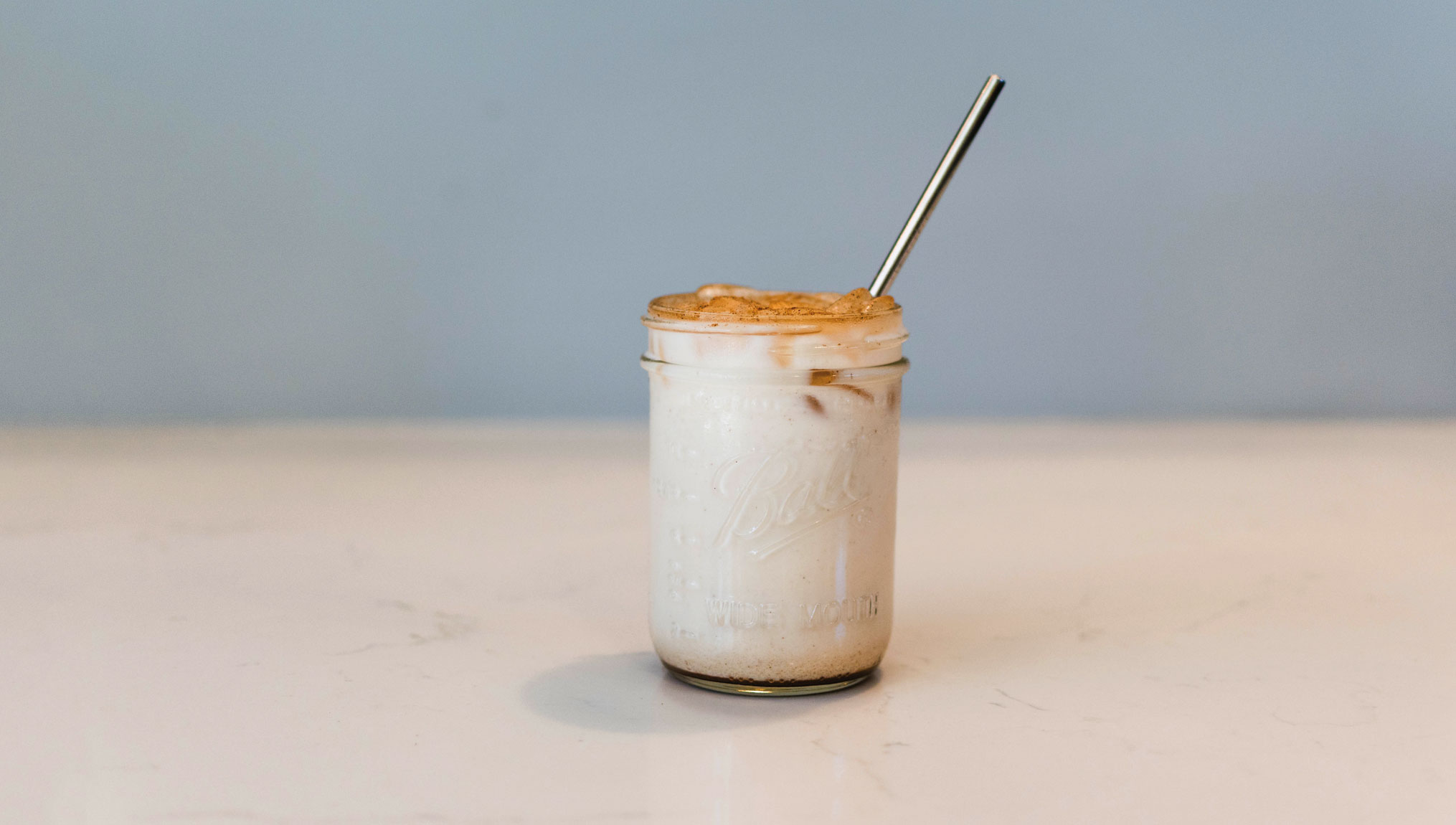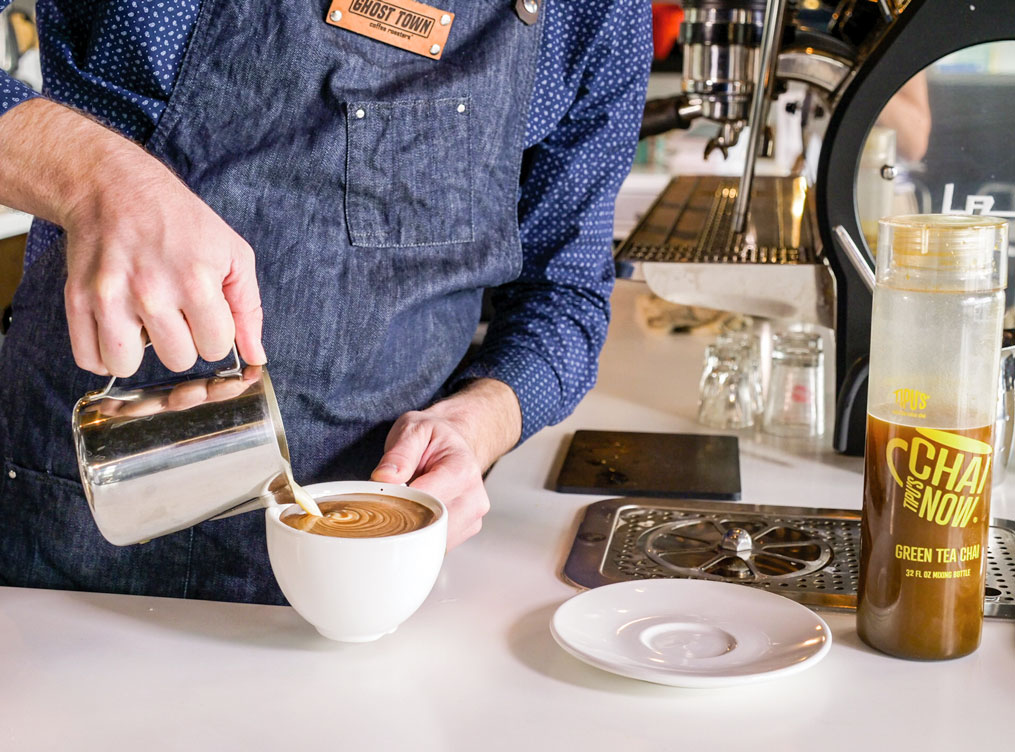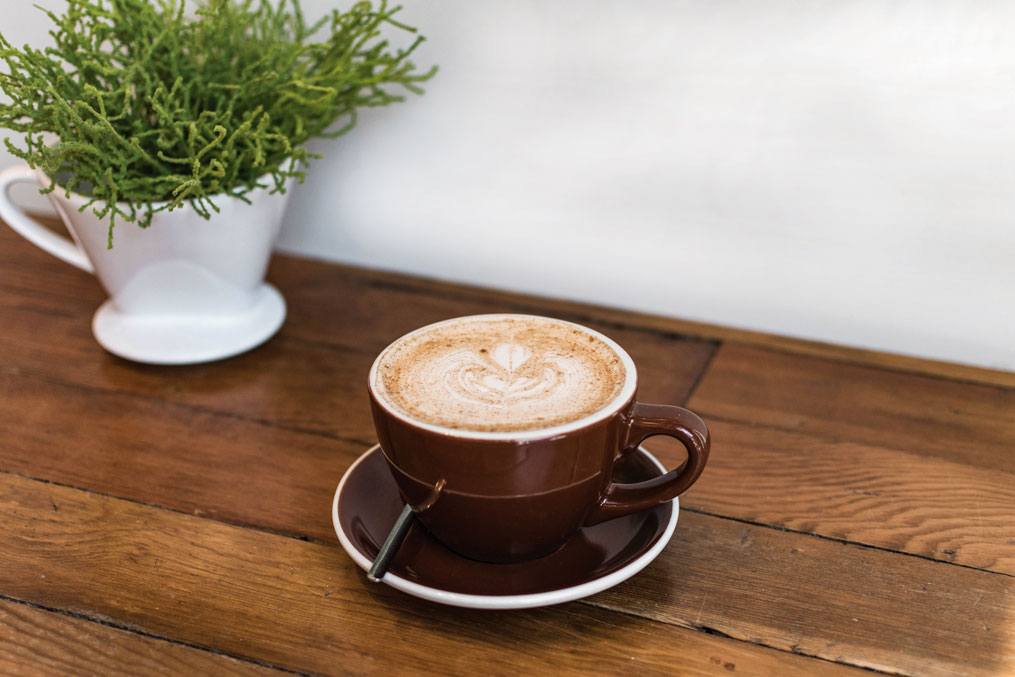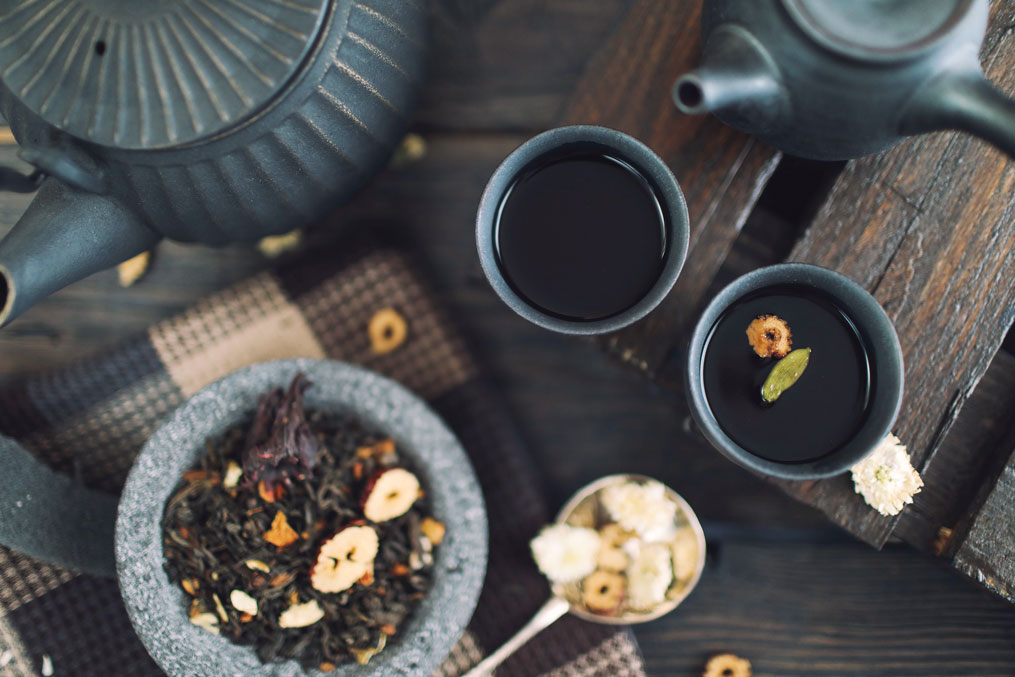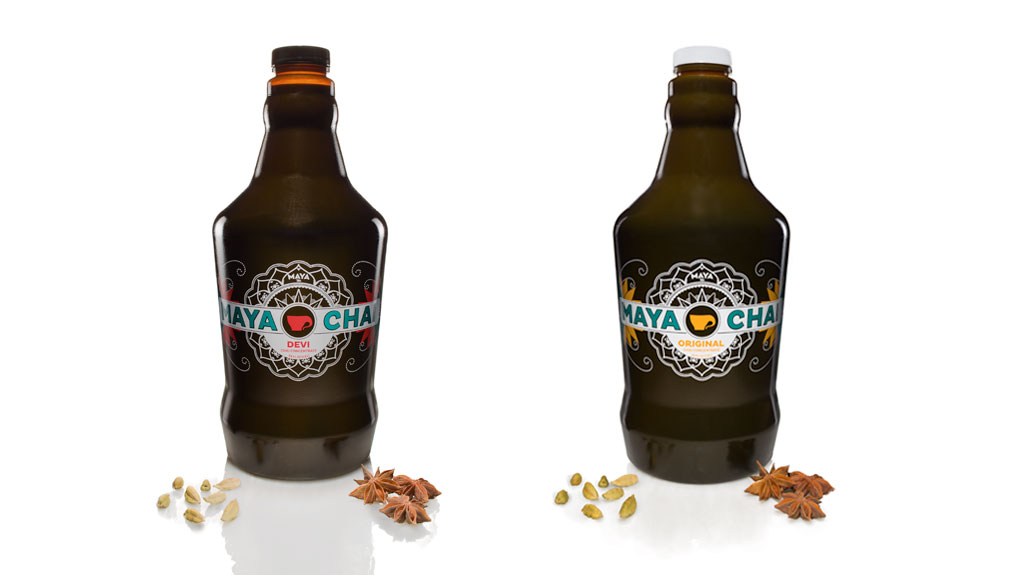Backlot Coffee Chai. Photo by Melody Nelson.
[W]hy would a coffeehouse serve tea—chai, specifically? For some, it’s simply because they love it.
As its name suggests, Highwire Coffee Roasters began as a coffee roaster. But when founder Rich Avella launched the California-based roastery in 2011, he felt it was important to also serve chai.
“For a certain number of people, they love chai and we recognize chai as a legitimate tea tradition,” he says. “For a lot of people, it’s a gateway. A lot of people enter tea through chai … It’s not something that changes our identity as a coffee roaster; it’s another thing that we love.”
Highwire served a house-made chai from concentrate at first. But Avella says it was “difficult to make consistently to get the same taste all the time.” He remembered trying and liking Tipu’s Chai at a trade show in 2008, so in 2012 Highwire switched to Tipu’s Chai powder, which is combined with hot water to make a chai concentrate. According to Amy O’Hoyt, Tipu’s sales manager, Tipu’s dry format doesn’t require any preservatives.
“It was an easy solution, because we love their chai and it’s so quick and easy to make,” Avella says. “I was really struck by what was in the cup—this balanced chai that had tea character, a blend of spices, not a one-note spice.”
Highwire’s tea division has since rebranded as 4track tea and also became a local distributor for Tipu’s. “That’s deepened our relationship,” Avella says.
DIY Chai
While Highwire uses a chai mix, Backlot Coffee in Chicago and Evanston, Illinois, does its own chai concentrate, brewed with bourbon barrel-aged chai tea from Chicago-based Rare Tea Cellar and chai spice mix from The Spice House (located across the street, which simplifies inventory management), and topped with the shop’s own blend of spices.
Backlot co-owner John Kim says they used to serve boxed chai but customers often asked to see the ingredient list so they’d know what was in it. “If we can simplify the ingredient list by the things that we know are in it, it’s easy for us to tell people, no there’s no X in it,” he explains.
As part of a move towards making more materials in-house, Backlot also makes its own lavender and vanilla syrups. “It’s fun to be able to make things and taste them,” Kim says.
Consistency hasn’t been a huge issue, because he has a lean staff of eight people and the employee handbook includes instructions on making the chai concentrate. “I think the inconsistencies are sometimes part of the fun,” Kim says. “It’s the same way with pulling shots, once somebody starts to learn the factors that make it taste the way it does.”
Custom Chai
For operators who want a bespoke (made-to-order) chai but don’t want to make it in-house, Portland, Oregon-based Pearl Beverage Co. creates custom chais for its clients. The Jasmine Pearl is a sister company to Pearl Beverage Co. and serves its custom chai in its Portland tasting room and wholesales the blend.
“It’s a traditional recipe [using black tea] but ours does have ginger, so that’s a little twist on things,” says Jodi Harrison, The Jasmine Pearl’s wholesale account manager.
Some cafés feature multiple chai offerings.
O’Hoyt says many cafés carry the black and green tea versions of Tipu’s chai. “We focus on regional chais from India,” O’Hoyt says, “much like beans being sourced from different areas from across the globe.”
Highwire originally served Tipu’s Masala chai, which is made with black tea like in the Gujarat region of India—where Tipu’s founder’s grandmother is from—but it has also added Tipu’s Kashmiri chai, which is made with green tea and saffron, as in the Kashmir region in northern India.
“We thought the story of regionality was so compelling,” Avella says. “We use a map of India to show where the roots of both styles of chai were coming from. That’s been a really great conversation-starter.”
Masala and Kashmiri chais offer different flavor profiles, and Kashmiri chai has less caffeine than Masala since Kashmiri is made with green tea; however, Tipu’s offers a decaf version of the Masala, which O’Hoyt says is popular in bookstore cafés.
One, Two, Chai-Chai-Chai
Like Tipu’s, The Chai Company also offers several chais and encourages cafés to provide their customers with multiple flavor options.
“It does position you as more of a specialist in this category,” says Catherine Wong, the Chai Company’s director of marketing and sales.
The Chai Company has an Authentic Chai, Rooibos Chai, Spicy Oolong Chai, and Grizzly Chai. All are sold as boxed concentrate.
According to Manish Shah, founder of Tucson, Arizona-based Maya Tea Company, chai is sold as a concentrate, a powder, in tea bags, or in a loose-leaf format.
“Chai in tea bags is really just for the home user,” he says. “Because of the amount of volume that most coffee shops have with their chai, the decision that they need to make is whether they want to use a pre-made concentrate or if they want to brew their own concentrate.”
Shah sells his concentrate wholesale but he makes it much stronger than other chai concentrates to avoid paying to ship large quantities of water. “Most chai companies are one-to-one,” Shah says. Maya Tea Company’s chai is one part chai to 11 parts milk
(or alternative).
Sweet Chai of Mine
While many American customers have come to know chai as a sweetened drink, Maya and Tipu’s offer unsweetened versions as well.
“For the more spicy version, we’ve taken down the sweetener and added a little bit of heat to the back,” Shah says. “In India, good chai is pretty spicy. Fresh ginger which is what makes it spicy.”
A less sweet chai is more versatile, according to Simon Lam, director of operations at The Chai Company. Customers can always add sweetener, if that’s their preference.
“It gives people more options if they want to make it sweet,” he says. “You can’t take the sweetness out of the Authentic Chai without diluting it, which would imbalance the flavor profile.”
Got Milk?
Choice of milk can complement the flavor profile in a chai latte.
In Northwest India, where Shah is from, many people use buffalo milk, which is much fattier than the milks served in the United States. He says regular whole milk most closely mirrors buffalo milk and adds richness to the drink.
“Outside of that, the milk that we favor the most is macadamia nut milk,” Shah says. “After that, I think coconut milk if your next-best option. Coconut flavor gives it a nice flavor.”
Soy, almond, or skim milk can also work in a chai latte, but those options tend to have less body.
Chai’s the Limit
Chai is a versatile ingredient, with applications in cooking and baking as well as beverages.
Lam says some of The Chai Company’s customers use the Grizzly Chai to marinate meat, for instance, because the sweetness lends a caramelized flavor.
“I think the real key is to understand that chai has a lot of different facets to it— it’s not just a drink on the menu,” Shah says, noting that some of his customers use his product to make chai-ice cream shakes.
Chai opens customers’ minds to new flavors, Shah also points out. The popularity of chai has helped spur interest in other Indian spice flavors, such as turmeric, Shah says.
“Chai set the stage for so many other flavors,” he says. “When I look at everything that’s happened, where would turmeric milk be if it hadn’t been for chai?”
Check out our story about Dona Chai >>
Check out our story about Pip’s Original Chai flights >>



